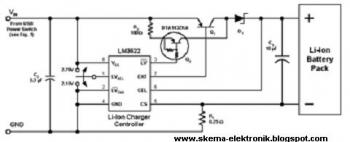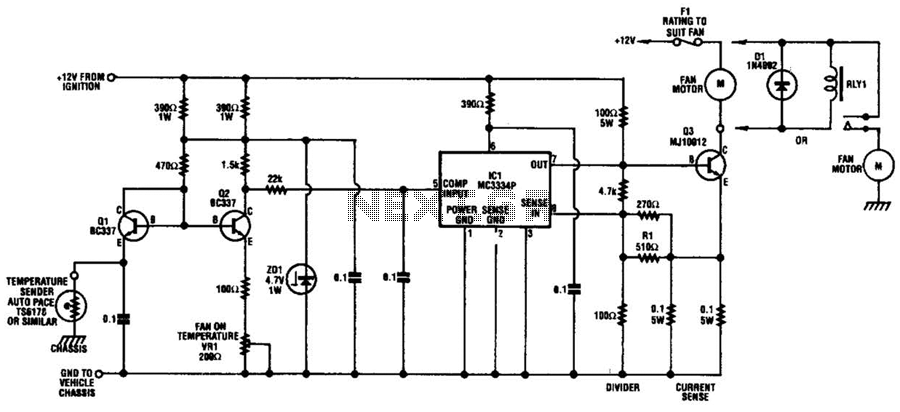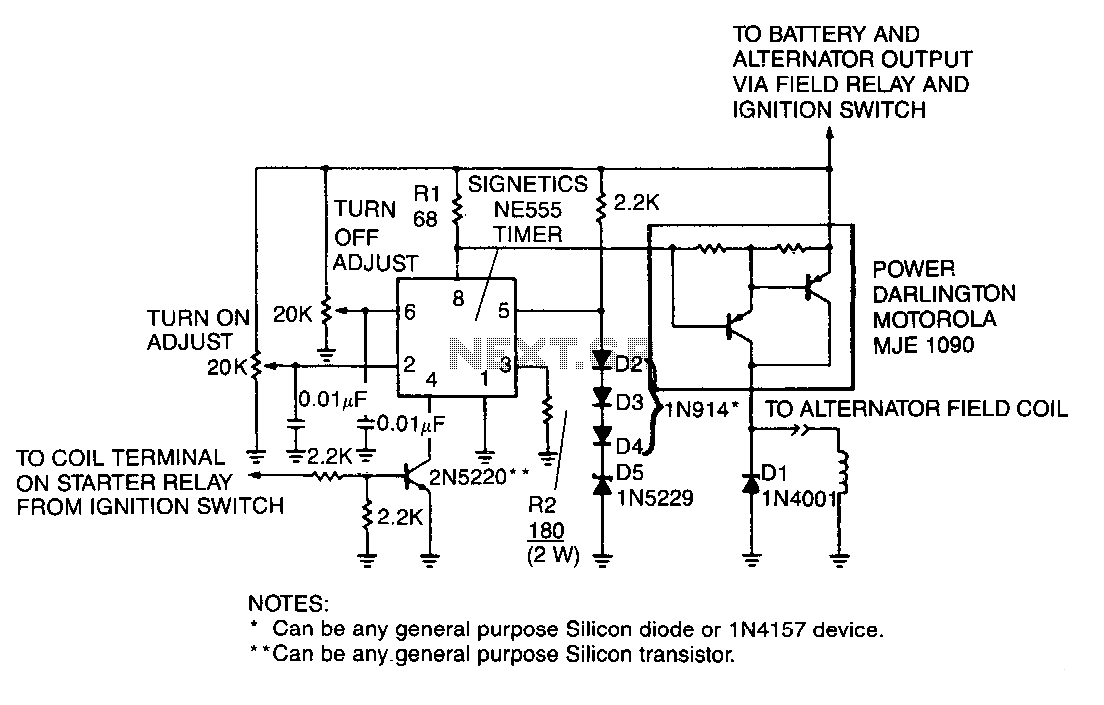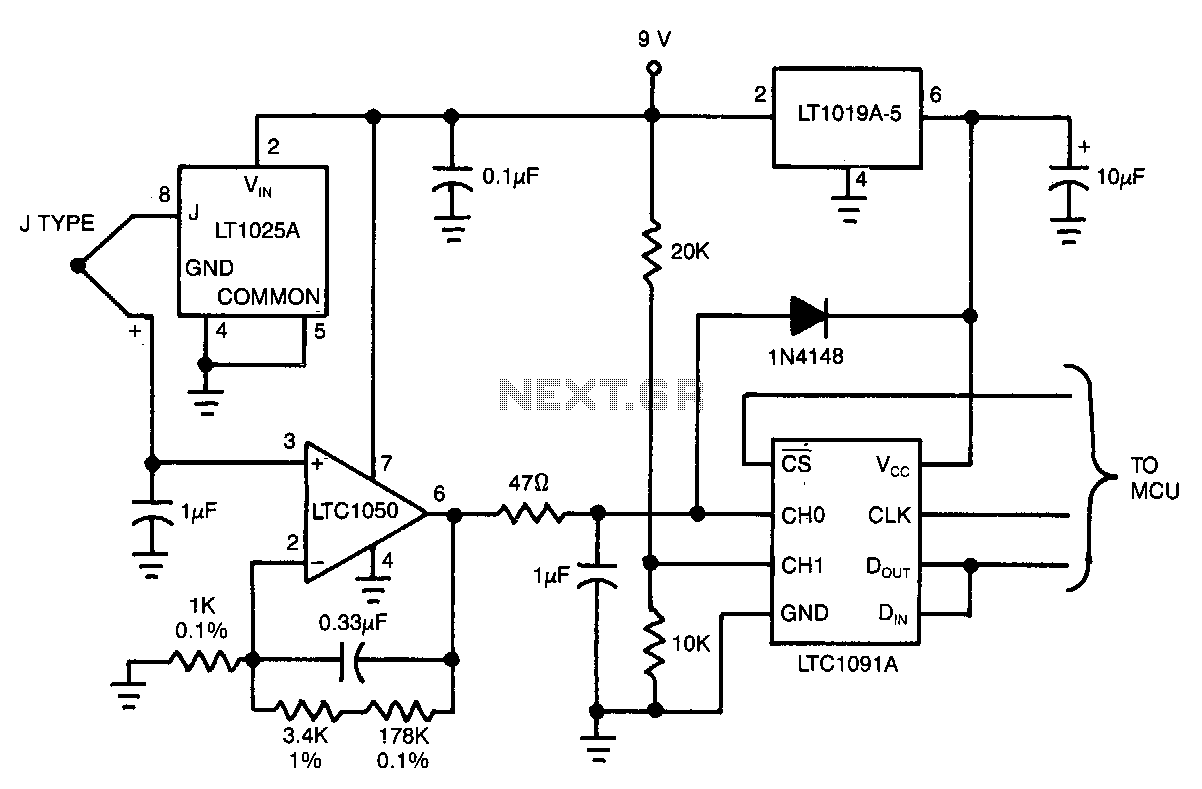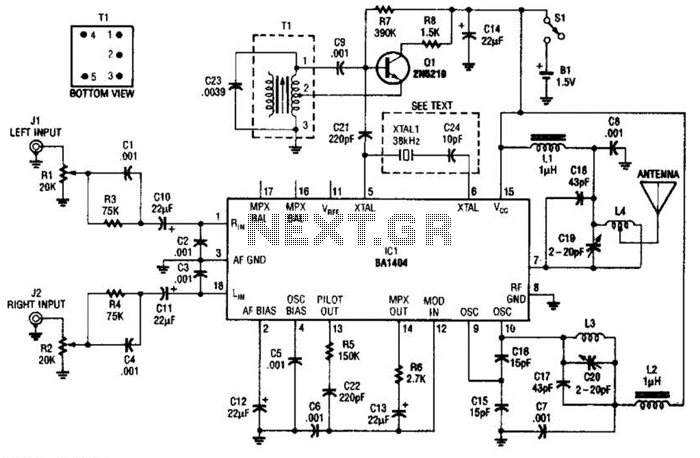
BT136 Temperature Controlled Fan Regulator
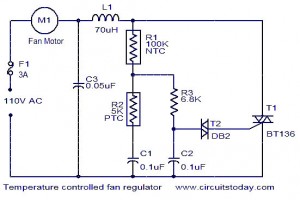
The function for automatically controlling the speed of a fan according to the temperature. Components: BT136 Triac, Capacitor, Resistor, Relay, Fan Motor.
This circuit is designed to automatically adjust the speed of a fan based on the ambient temperature. It utilizes several key components, including a BT136 Triac, which serves as the main switching element, allowing for control of the fan motor's power supply.
The system begins with a temperature sensor that monitors the surrounding environment. As the temperature rises, the sensor outputs a corresponding voltage signal. This signal is fed into a control circuit that includes a resistor and capacitor, forming an RC network that helps to filter and stabilize the input signal.
The BT136 Triac is triggered by the control circuit when the temperature exceeds a predetermined threshold. This component is capable of handling AC loads, making it suitable for controlling the fan motor directly. The Triac effectively modulates the voltage supplied to the fan, enabling speed control through phase angle modulation.
A relay may also be incorporated into the design to provide isolation between the control circuit and the high-power fan motor. This ensures that the sensitive components are protected from high voltage spikes that can occur during operation.
The fan motor receives power from the AC supply, and its speed is adjusted based on the current flowing through the Triac, which is influenced by the temperature readings. By incorporating these components into a cohesive circuit, the system can efficiently maintain comfortable temperature levels within a designated space while optimizing energy consumption.
Overall, this automated fan speed control circuit is an effective solution for temperature regulation, enhancing both comfort and energy efficiency in various applications.The function for automatically control the speed of your fan according to the temperature.? Component: BT136 Triac, Capacitor, Resistor, Relay, Fan Motor, . 🔗 External reference
This circuit is designed to automatically adjust the speed of a fan based on the ambient temperature. It utilizes several key components, including a BT136 Triac, which serves as the main switching element, allowing for control of the fan motor's power supply.
The system begins with a temperature sensor that monitors the surrounding environment. As the temperature rises, the sensor outputs a corresponding voltage signal. This signal is fed into a control circuit that includes a resistor and capacitor, forming an RC network that helps to filter and stabilize the input signal.
The BT136 Triac is triggered by the control circuit when the temperature exceeds a predetermined threshold. This component is capable of handling AC loads, making it suitable for controlling the fan motor directly. The Triac effectively modulates the voltage supplied to the fan, enabling speed control through phase angle modulation.
A relay may also be incorporated into the design to provide isolation between the control circuit and the high-power fan motor. This ensures that the sensitive components are protected from high voltage spikes that can occur during operation.
The fan motor receives power from the AC supply, and its speed is adjusted based on the current flowing through the Triac, which is influenced by the temperature readings. By incorporating these components into a cohesive circuit, the system can efficiently maintain comfortable temperature levels within a designated space while optimizing energy consumption.
Overall, this automated fan speed control circuit is an effective solution for temperature regulation, enhancing both comfort and energy efficiency in various applications.The function for automatically control the speed of your fan according to the temperature.? Component: BT136 Triac, Capacitor, Resistor, Relay, Fan Motor, . 🔗 External reference
Warning: include(partials/cookie-banner.php): Failed to open stream: Permission denied in /var/www/html/nextgr/view-circuit.php on line 713
Warning: include(): Failed opening 'partials/cookie-banner.php' for inclusion (include_path='.:/usr/share/php') in /var/www/html/nextgr/view-circuit.php on line 713
